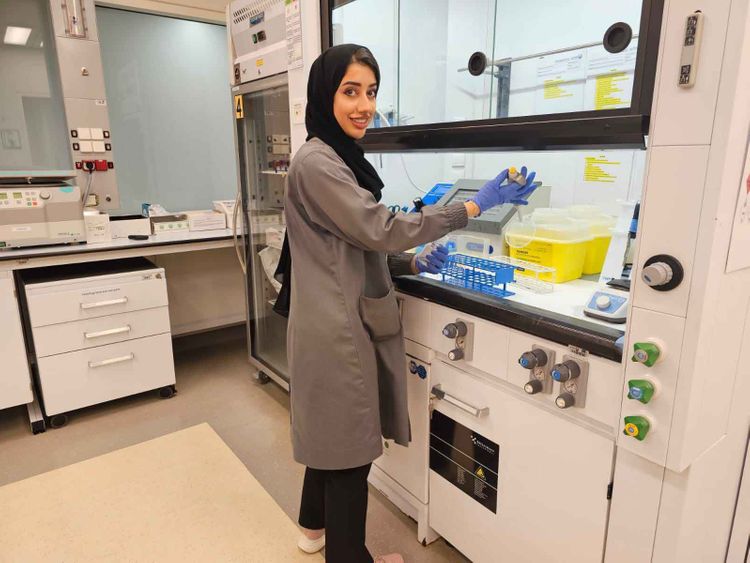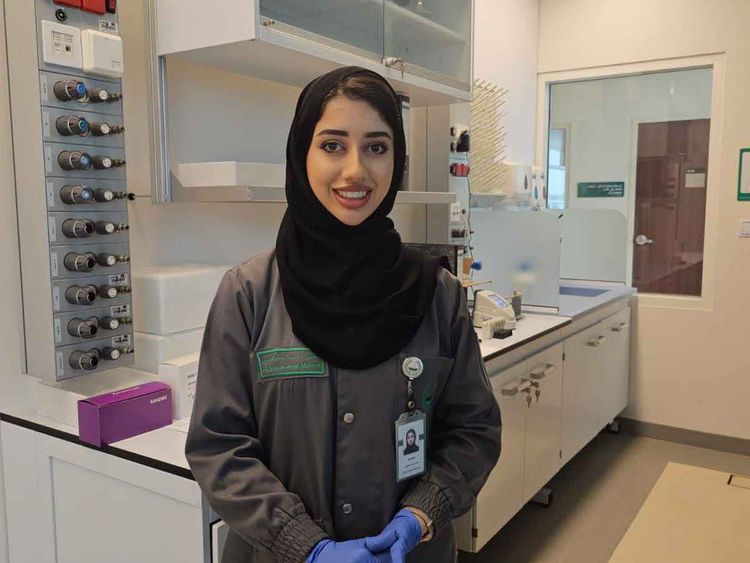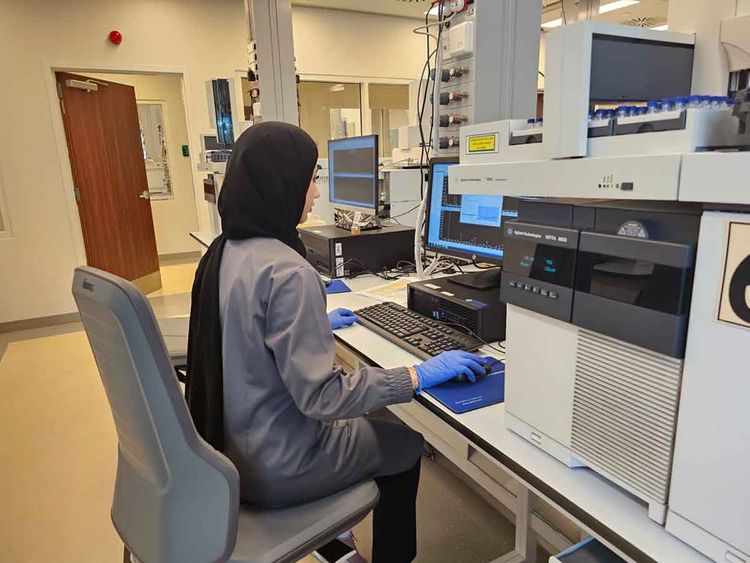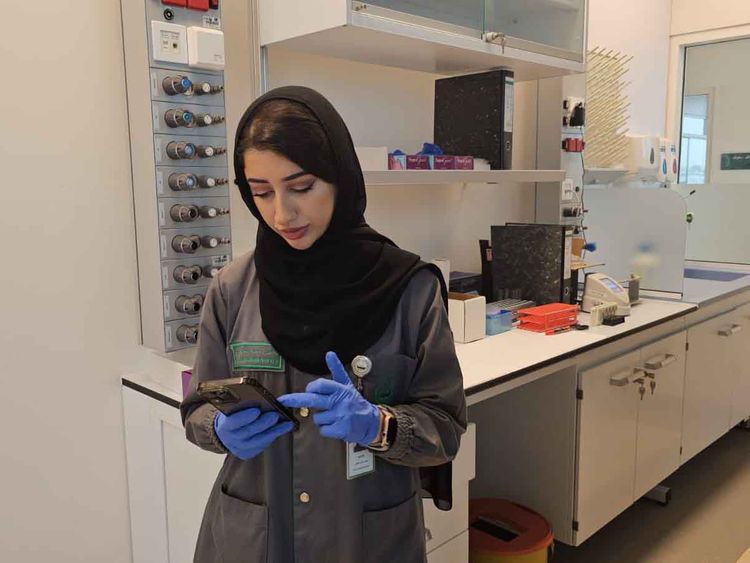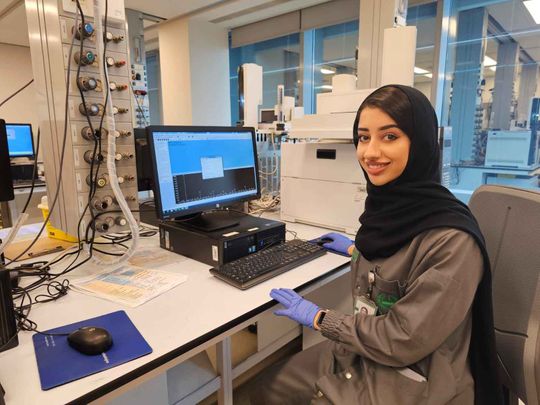
Dubai: Hessa Al Tamimi is a scientist and a super-sleuth. As a member of the investigative community, she deals with intricate cases, from identifying hazardous materials and toxic substances to conducting post-mortems and employing advanced forensics.
In the last four years since starting her post, Al Tamimi has already established herself as a standout talent in the domain. Presently serving as an assistant expert in forensic toxicology at the General Department of Forensic Science and Crime of the Dubai Police, her contributions have left an indelible impression in the field.
All Tamimi is a recognised international expert, and is called upon to testify in court as an expert witness.
Her expertise — toxicology — is a scientific discipline that deals with understanding the properties, impacts, and identification of poisons.
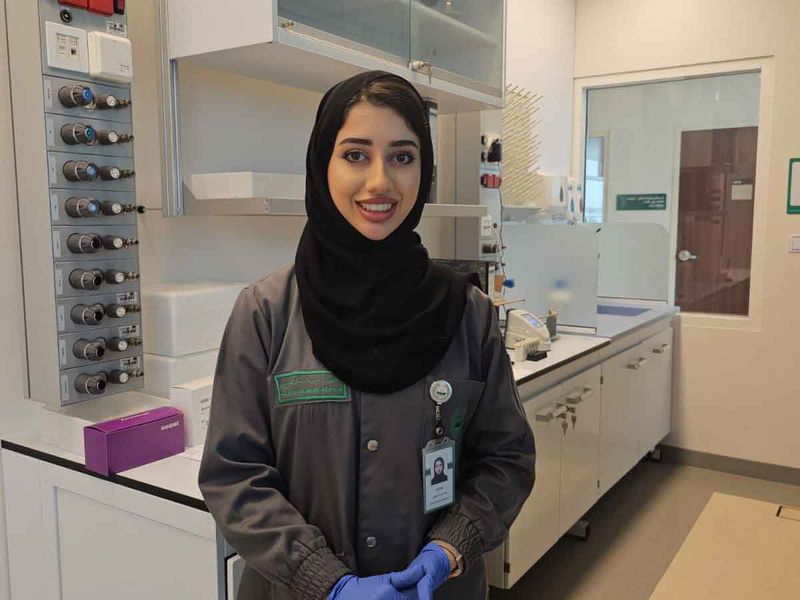
She has further sub-specialised in nano-materials, having earned a master’s degree in this crucial field. This makes her a pioneer specialist in this field at the Dubai Police General Headquarters.
Start of police work
Dubai Police sent Al Tamimi to take her Bachelor’s degree in Chemistry in 2015 at the University of Sharjah, and completed it in 2019 at the top of her class.
She then took her Master’s degree in the Imperial College London, one of the world’s premier institutes of learning, focussing on nanomaterials — and completed her degree with distinction.
As part of her Master’s research, Al Tamimi developed a mechanism for detecting chemical substances in biological samples on a portable device, allowing for immediate diagnosis.
She then joined the Department of Toxicology in the Department of Forensic Science specialised in the General Department of Forensic Evidence and Criminology.
Biological samples
Nanoparticles are used to support nano-chemical detection. In police work, nanoscale techniques greatly help in testing devices for toxic substances in biological samples.
In toxicology, the nanoscopic scale is a lower bound to the mesoscopic scale for most solids.
* Nano materials, or nanoscale materials and sensors, can more efficiently detect and identify trace amounts of substances, including DNA, drugs, and chemical residues, which may be crucial in solving crimes.
* Nanoparticles with unique properties can also be used as tracers to tag and track evidence. For example, these tracers can be applied to stolen goods, currency, or illicit substances, allowing law enforcement to trace their movements and uncover criminal networks.
* Nanoparticles can be designed as drug delivery systems for forensic purposes. These nanoparticles can target specific areas in the body, aiding in the delivery of chemical agents, tracers, or contrast agents, which may be used in forensic investigations, such as identifying injuries or analyzing biological samples.
Explaining the value of nanomaterials in crime forensics, Al Tamimi said: “They exhibit unique physical, chemical, and biological characteristics that make them highly versatile and valuable in various scientific and technological applications, including in crime forensics.
Nanomaterials can be used in sample detection and analyses. “One of the most promising applications is the use of nanoparticles as sensors — such as to detect and identify specific materials in complex samples,” she said.
Selective binding
For example, nanoparticles can be employed using specific bonds or antibodies that can selectively bind to target molecules, allowing highly sensitive detection of trace amounts of these molecules even in complex mixtures such as biological samples.
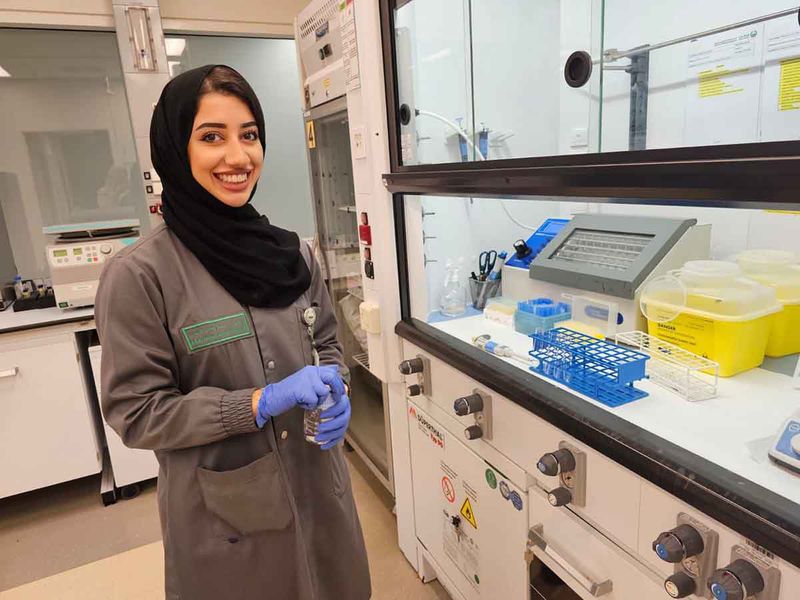
“This was the focus of my master’s thesis, which was to develop a mechanism for detecting analytes in biological samples on a portable device for immediate diagnosis. This may be applied to detect viral diseases or to detect drugs in biological samples in an efficient, rapid and less expensive manner.”
Challenges
Al Tamimi said forensic toxicologists encounter various challenges in their work. These include dealing with sample variability and degradation, staying updated with evolving analytical techniques and emerging substances (such as new psychoactive drugs), interpreting complex results and considering drug interactions.
This also includes navigating legal requirements and court proceedings as “expert witnesses”, and managing heavy workloads, time constraints, and maintaining quality control to ensure accurate and timely analysis.
Through the use of appropriate sample preparation techniques, internal standards and necessary quality control measures, collaboration with other experts, and continuous improvement of analytical methods, toxicologists can achieve highly accurate and documented results even in complex or difficult cases.
Experts like Al Tamimi can detect the presence of people and substances in closed locations, using advanced laboratory tests and techniques.
Al Tamimi said: “In this field, we analyse the chemical composition of human odour for criminal investigation purposes, and the technique that is used for this research is MS-GC – puzzle chromatography - mass spectrometry, which is an accurate analytical technique used to identify and quantify the different chemical compounds present in the sample.”
“This technique works by separating individual chemical compounds in a mixture using gas chromatography, the chemical imprint of those compounds is then analysed using a mass spectrometer.”
Distinctive fingerprints
How to employ odour fingerprint tests to solve criminal cases? Al Tamimi explained that MS-GC can be used to identify and measure volatile organic compounds (VOCs) that are emitted by humans.
“These VOCs can have ‘fingerprints’, a unique and distinctive scent, which is used as a guide to identify people — and prove their presence at crime scenes during criminal investigations.”
Al Tamimi said that MS-GC is particularly useful in the field of odour fingerprinting, due to its ability to detect trace amounts of volatile organic compounds, even in complex mixtures.
“This makes it an essential tool for the identification and measure of specific volatile organic compounds associated with a specific odour.”
Al Tamimi recently participated the first international meeting of the Committee for Odorprint Examinations in the police field in Prague, Czech Republic, as a key member.
Multinational
The group counts members from other countries, including the US, the UK and France. The aim is to start activating the processes of evaluating the efficiency of “odorprint” examinations. Al Tamimi is conducting a research project in the same field.
This resulted in the registration of a member of the Dubai Police in the first committee for odourprint examinations in the police field.
In addition to starting a project aimed at creating a mechanism to examine odours for the purpose of identifying people who were present at the crime scene, it also provide clear and accurate evidence supporting the investigation file.
Courses and research
Al Tamimi aspires to complete her studies and obtain a doctorate in her specialty. She also aims to teach students, in addition to her job in the Dubai Police.
To keep herself abreast with the latest in her field, she continues to conduct research and contributes to developing new techniques in forensic science.
At the 2023 World Police Summit, Al Tamimi moderated a panel discussion on field challenges in forensic chemistry and forensic toxicology.
She also attended the Academic Training Programme (ATP) in Multiculturalism and Leadership, at Al Maktoum College of Higher Education in Dundee, Scotland; as well the training course in forensic toxicology, organised by the International Center for Forensic Sciences, in which Dr. Simon Elliot, consultant forensic toxicologist, lectured.
“In the event that a positive result is obtained, we perform the confirmatory test by carrying out extraction methods for the biological sample and injecting it into the gas chromatography-mass spectrometer (GC-MS).
"In the toxicology department, we also analyse cases related to post-mortem as well as driving under the influence," she said.
Cases
In the toxicology section, Al Tamimi's expertise includes handling more than 2,000 cases due to the high volume of drug abuse cases they receive.
Cases in the toxicology section include testing for drugs from suspects as well as people with a history of abuse by carrying out periodic examinations to rehabilitate them from drugs.


